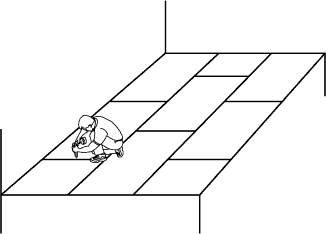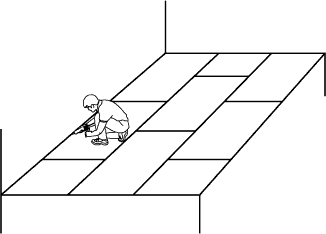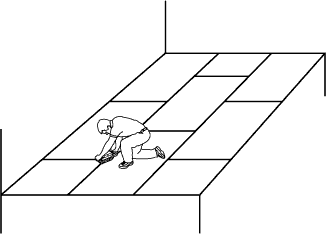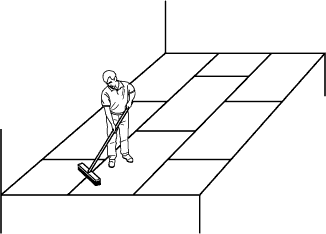 General Information
General InformationGreen Roofs
Rainwater Harvesting
Ponds and Wetlands
Energy-Efficient Building
Waterproofing
EPDM Roofing
Preparation
Basic Procedure
Multiple Walls
Details
Folded Inside Corners
Molded Inside Corners
Taped Inside Corners
Molded Outside Corners
Taped Outside Corners
Posts
Skylights
Outside Edges
Inside Edges and Sills
Edge Transitions
Pipe Boots
Curved Penetrations
Roof Drains
Scupper Drains
Overlap Seams
Butt Seams
Edges
Coverings
Components
Acrylic Roofing
Documents

EPDM ROOFING: PREPARATION
New wood-framed roofs should be sheathed with exterior-grade plywood or with oriented strand board (OSB) attached with non-popping fasteners. Existing wood-framed roofs should be stripped, and in most cases it will be necessary to apply a new layer of plywood or OSB over the old sheathing. However, if stripping the roof reveals plywood in good condition, it may suffice to drive a ring-shank nail adjacent to each of the original fasteners so that the head of the ring-shank nail overlaps the original fastener to prevent popping.
New concrete roofs should be steel troweled and then cured 30 days before waterproofing. Old concrete roofs should be stripped, pressure washed, and patched. Contact us for advice about installing rubber over metal, foam, and other surfaces.
Before beginning, caulk large gaps and edge transitions, sand or grind protrusions, and round external edges to a 1/2” radius.

To assure proper bonding and flashing, apply
EPDM
only on dry sunny days when temperatures
exceed 45°.

STEP 1: For wood roofs, attach sheathing with non-popping
fasteners such
as ring-shank nails, threaded nails, or deck screws.

STEP 2: For both wood or concrete roofs,caulk all gaps greater
than
1/4” as well as transitions between the roof and walls or skylights.

STEP 3: For wood roofs, rough-sand splintering areas and
rout roof edges to 1/2” radius. For concrete roofs, grind
protrusions
and form a 1/2” radius at edges.

STEP 4: Sweep or vacuum well before beginning. Inspect
workers’
shoes for embedded nails that could puncture the rubber membrane.